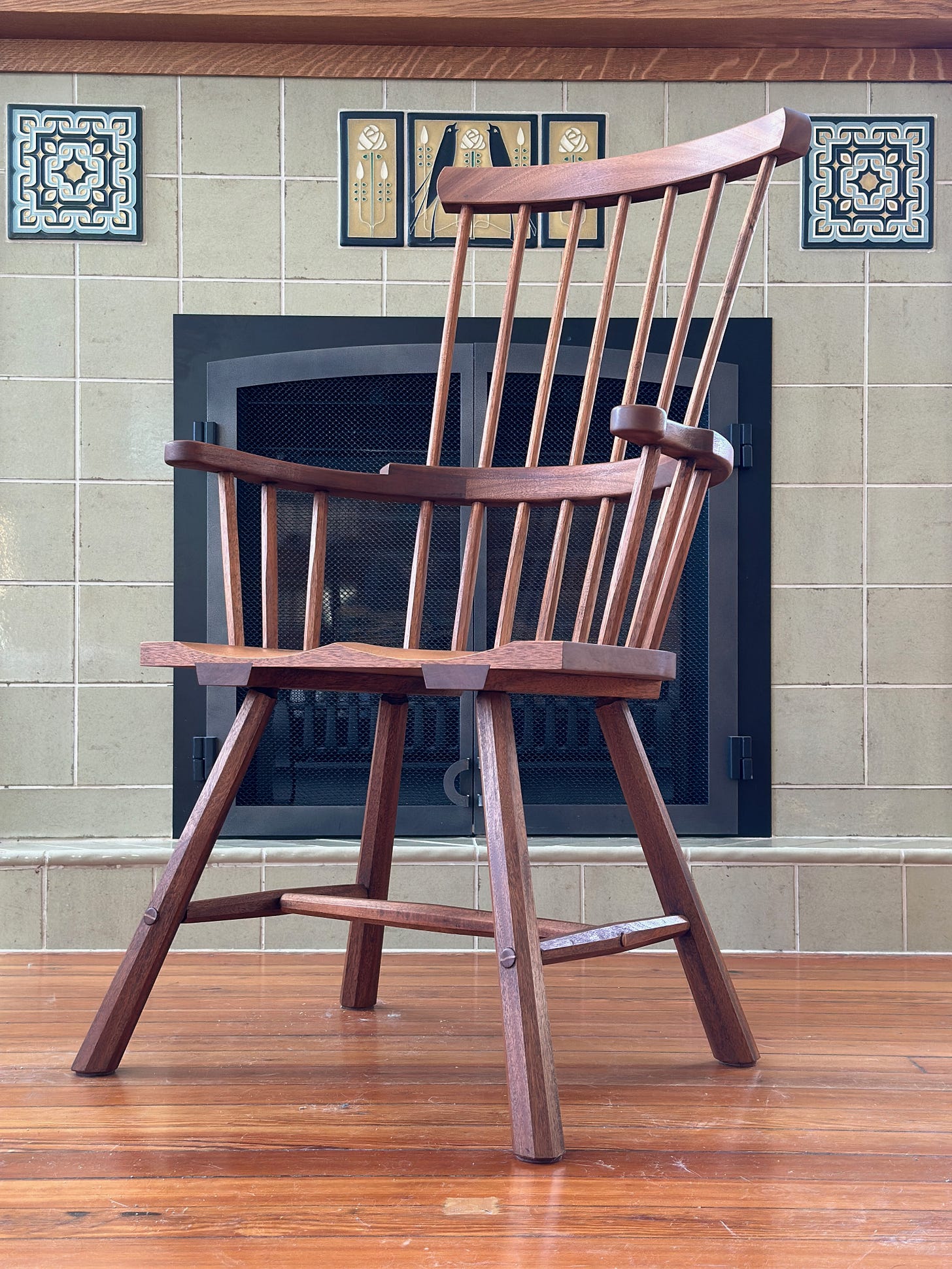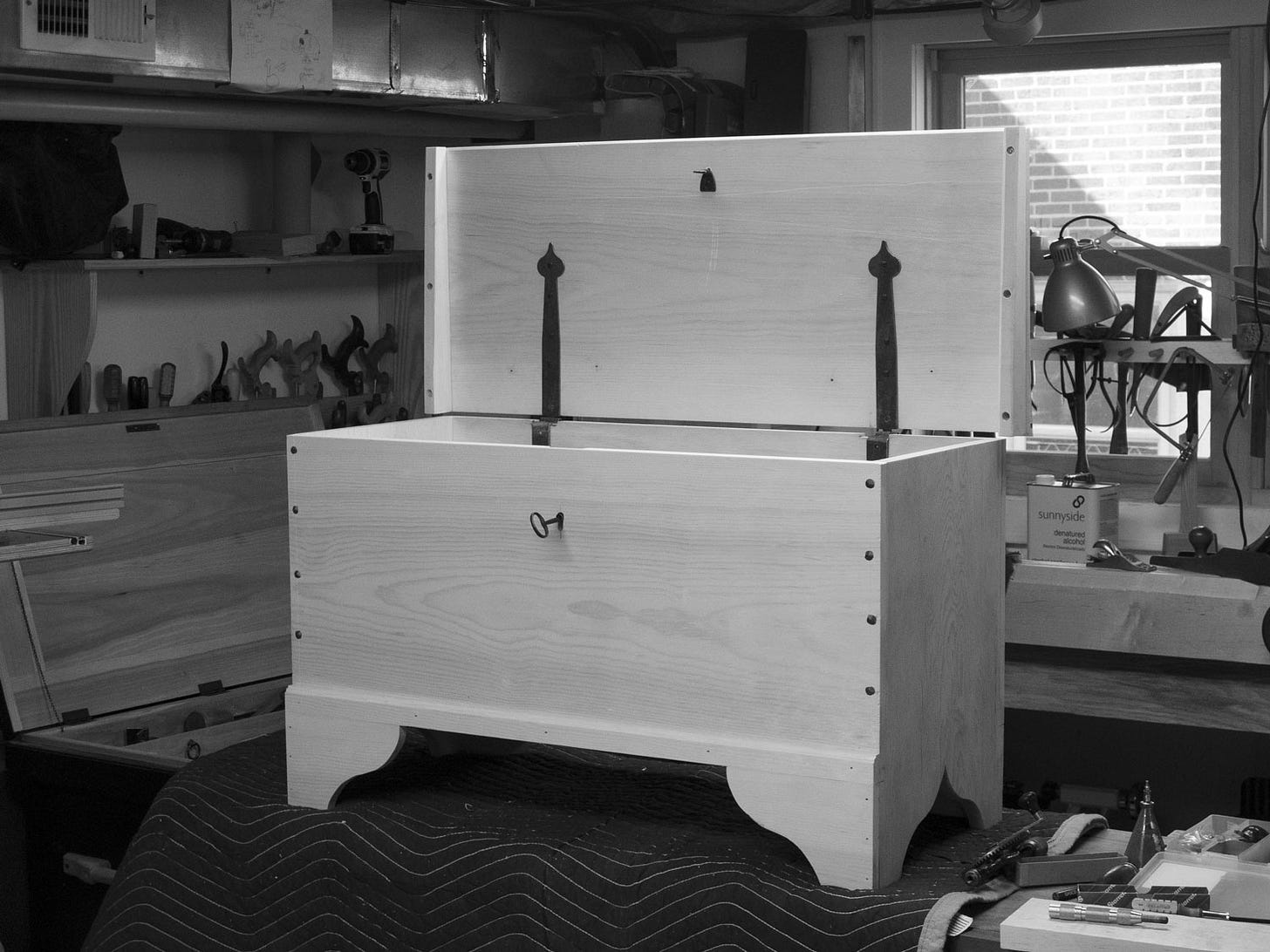
A lot of the furniture forms I build seem to defy the laws of wood movement. The cross-grain constructions in my chairs, six-board chests, sideboards, bookcases, music stands and cupboards (these are all pieces of mine that I am looking at as I write this) should have wrecked these works years ago.
But they survive just fine. Not just “fine,” they are completely unscathed by wood movement.
When students ask me how I get away with this, I answer: “Because these forms were developed before the rules of wood movement were written.”
It’s a joke (barely), but it’s grounded in knowledge that I’ve accumulated during the last 28 years of making furniture and studying old pieces.
I’m writing this particular piece because many beginners (and some experienced woodworkers) are scared to freaking death about wood movement. Nearly every construction or joint seems like a trap. And if you don’t add some odd, unglued sliding dovetail to your work, then your moulding is going to pop off the slab sides of your cabinet. Or worse.
The truth is that most glues offer some flexibility in cross-grain constructions (such as a table’s wide apron that’s tenoned into a leg). Plus, nails are ductile. They bend and allow some mood movement to sway them back and forth for decades.

But there’s another and (I would argue) bigger reason that wood movement is mostly an invisible monster under the bed. And that reason is the “hysteresis effect,” sometimes called the “hysteresis loop.”
The word “hysteresis” means “delay” or “to be late.” And that’s exactly what it’s describing. But before we can understand hysteresis, it’s best to understand what woodworkers imagine that wood movement looks like.
The Wood Breathes
One common explanation of wood movement is that wood is hygroscopic. It absorbs moisture from the air in wet environments and releases water into the environment in dry environments. Wood swells as it gets wet and shrinks as it dries.
So as the humidity changes during the seasons, the wood breathes water in (and swells) and breathes water out (and shrinks). And it does this forever – in and out.
It is our job to design furniture to accommodate this “breathing.” And we have formulas that help us calculate how much the wood will move each year if we know:
The relative humidity at the dry part of the year
The relative humidity during the wet part of the year
If our wood is quartersawn, flat-sawn or something between.
And so we make these calculations. And they tell us: The wood will move 1/4" each year. Yikes. But what if the answer was: Actually, it’s more like 5/64". That’s hysteresis at work.
Keep reading with a 7-day free trial
Subscribe to The American Peasant to keep reading this post and get 7 days of free access to the full post archives.



